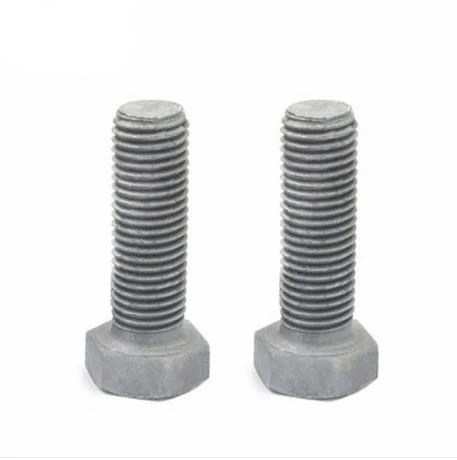

Understanding Metric Weld Studs for Enhanced Structural Applications and Performance
Dec . 13, 2024 18:39 Back to list
Understanding Metric Weld Studs for Enhanced Structural Applications and Performance
Understanding Metric Weld Studs Applications, Advantages, and Selection
In today’s industrial world, the demand for robust and reliable fastening solutions has led to the widespread use of weld studs. Among these, metric weld studs have become increasingly popular due to their compatibility with metric systems, especially in regions where the metric system is standard, such as Europe and parts of Asia. This article aims to explore the various aspects of metric weld studs, including their applications, advantages, and guidelines for selection.
What Are Weld Studs?
Weld studs are mechanical fasteners that are welded onto a workpiece to create a strong, permanent attachment for other components. They feature an integrated base that allows them to be attached to a surface via arc welding processes, such as stud welding. Once attached, they offer a robust threading feature that accommodates various nuts, bolts, or other fasteners as needed in a particular assembly.
Applications of Metric Weld Studs
Metric weld studs find applications in various industries, including construction, automotive, aerospace, and heavy machinery. Some common applications include
1. Structural Applications In construction, metric weld studs are often used to connect steel beams and trusses. Their strength and durability make them ideal for applications where structural integrity is critical.
2. Automotive Industry In vehicle manufacturing, metric weld studs are used to attach components such as fenders, brackets, and reinforcement parts. Their ability to withstand vibrations and impacts makes them suitable for this sector.
3. Aerospace Applications The aerospace industry requires fasteners that can endure harsh conditions and high stress levels. Metric weld studs are often employed in the assembly of aircraft components.
Advantages of Using Metric Weld Studs
1. Strength and Reliability One of the main advantages of using metric weld studs is their ability to deliver a permanent and strong joint. Once welded, these studs provide exceptional load-bearing capacity, making them reliable for various applications.
2. Time-Efficiency The process of attaching weld studs is quick compared to traditional fastening methods. This efficiency can lead to significant time savings in production settings.
metric weld studs

3. No Access Required Unlike traditional bolts that require access to both sides of a joint, weld studs can be installed from one side. This is particularly useful in situations where space is limited.
4. Reduced Weight Weld studs can be designed to minimize weight while maximizing strength. This attribute is especially valuable in industries such as aerospace and automotive, where weight reduction is crucial.
5. Versatility Available in various sizes, shapes, and materials, metric weld studs can be tailored to meet specific requirements. This versatility allows for their use in a wide range of applications and materials, including steel, aluminum, and plastics.
Choosing the Right Metric Weld Stud
When selecting metric weld studs for a specific application, several factors should be considered
1. Material Compatibility Ensure that the weld studs are made from materials compatible with the base material to which they will be attached to avoid issues related to corrosion and structural integrity.
2. Size and Thread Pitch It is crucial to select the appropriate size and thread pitch based on the components that will be fastened. Metrical sizing helps maintain uniformity and ensures that components fit seamlessly.
3. Welding Process Different welding methods may be used depending on the application and joint configuration. Understand the recommended welding process to achieve the best results.
4. Load Requirements Evaluate the load requirements of the application. Different stud designs may be suited for specific stress levels or environments.
5. Standards and Certifications Ensure that the chosen weld studs comply with relevant industry standards and certifications, especially for safety-critical applications.
Conclusion
Metric weld studs are an integral component in various industrial applications due to their strength, efficiency, and versatility. By understanding their applications, advantages, and selection criteria, industries can harness the full potential of these fastening solutions. Whether in construction, automotive, aerospace, or heavy machinery, metric weld studs continue to exemplify a reliable choice for creating strong, permanent attachments that stand the test of time.
Latest news
-
Hot Dip Galvanized Bolts-About LongZe|High Strength, Corrosion Resistance
NewsJul.30,2025
-
High-Strength Hot Dip Galvanized Bolts - Hebei Longze | Corrosion Resistance, Customization
NewsJul.30,2025
-
Hot Dip Galvanized Bolts-Hebei Longze|Corrosion Resistance&High Strength
NewsJul.30,2025
-
High-Strength Hot-Dip Galvanized Bolts-Hebei Longze|Corrosion Resistance&High Strength
NewsJul.30,2025
-
Hot Dip Galvanized Bolts-Hebei Longze|Corrosion Resistance&High Strength
NewsJul.30,2025
-
Hot Dip Galvanized Bolts - Hebei Longze | Corrosion Resistance, High Strength
NewsJul.30,2025

